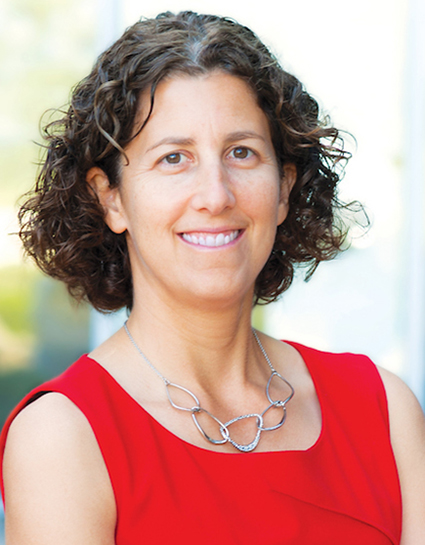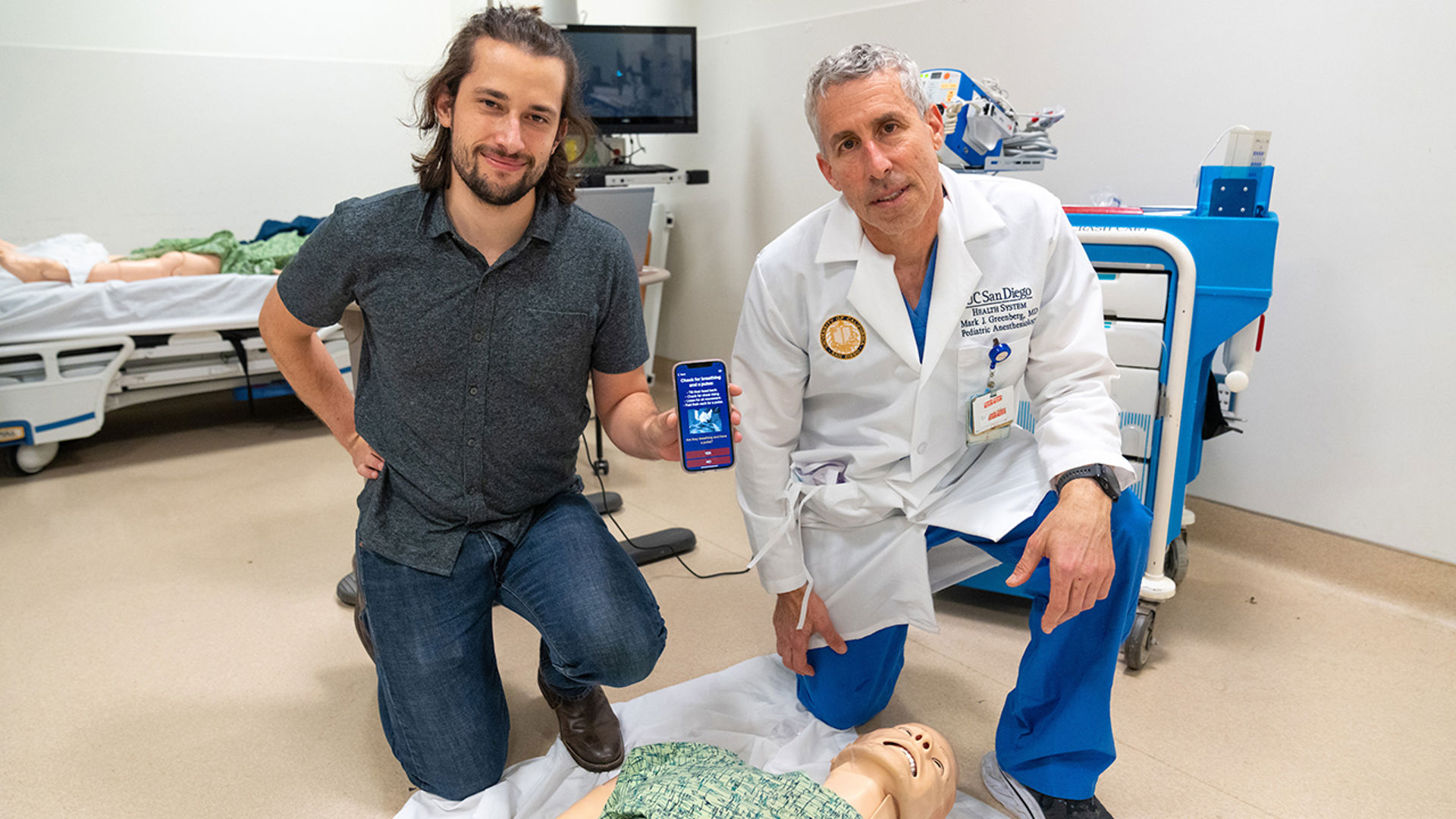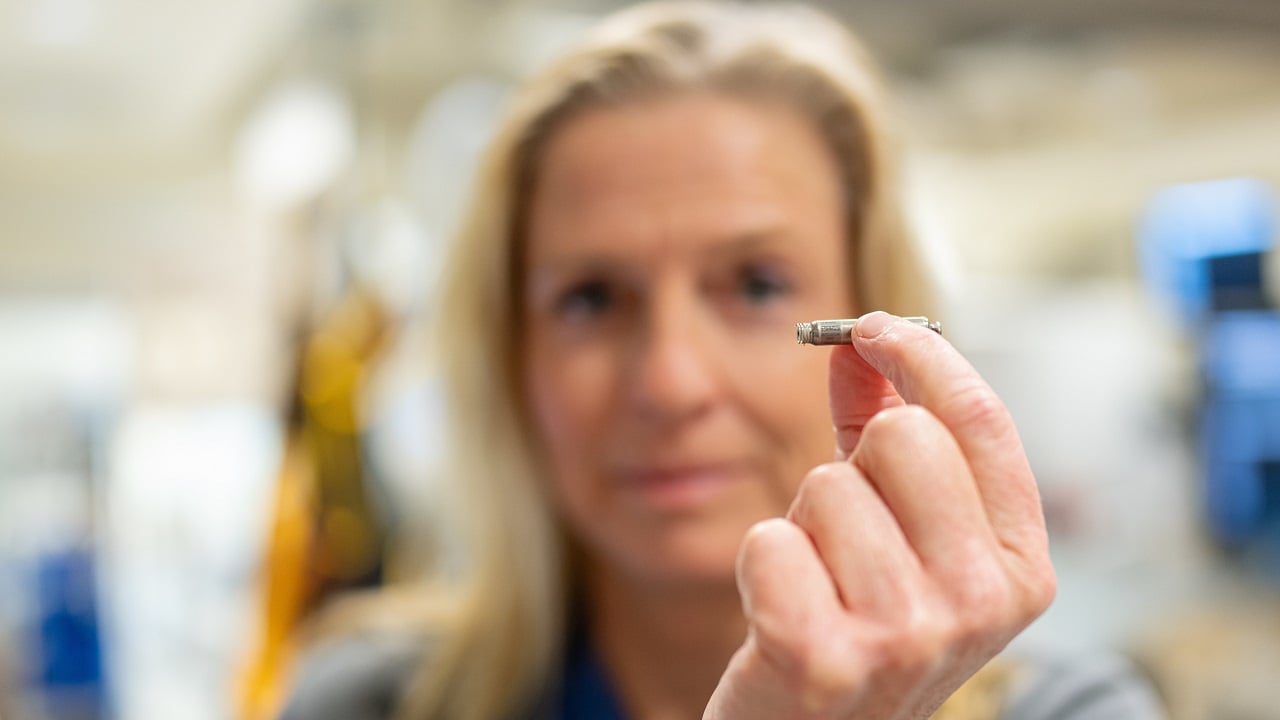It was a warm, summer evening when Lori Daniels, MD, and David Krummen, MD, a married couple who are both physicians at UC San Diego Health, decided to take their 12-year-old son to the beach for a dinner picnic and to enjoy a cover band.
During the outing, while walking the coastline, they noticed something nearby floating in the water.
"As we walked along the shore, I saw what I thought was a log floating in the crashing waves, but I kept my eye on it," said Daniels, cardiologist and medical director of the Cardiovascular Intensive Care Unit at UC San Diego Health. "It was very dark by now, but as we got closer, we both quickly realized it was a person floating face down in the water."
 Lori Daniels, MD, performed life-saving, bystander CPR in an unexpected emergency on a San Diego beach. Photo credit: UC San Diego Health
Lori Daniels, MD, performed life-saving, bystander CPR in an unexpected emergency on a San Diego beach. Photo credit: UC San Diego Health
Jumping into action, Daniels and Krummen sprinted into the knee deep-water where they found a man unconscious and not breathing. Together, the physicians pulled the man to shore and started performing cardiopulmonary resuscitation (CPR) while also shouting to nearby community members to call 9-1-1.
"While Lori provided compressions and tried to dry off the individual as best as possible, I gave respiratory support," said Krummen, MD, cardiac electrophysiologist at UC San Diego Health. "Soon after we initiated CPR, San Diego Lifeguards arrived with a ventilator and defibrillator."
Daniels and Krummen felt a pulse return in the individual just as an ambulance arrived.
How bystander CPR can increase survival from cardiac arrest
According to the American Heart Association, CPR, especially if performed immediately, can double or triple a cardiac arrest victim’s chance of survival.
In 2021, 48% of people who experienced an out-of-hospital cardiac arrest in San Diego County received CPR before first responders arrived. More lives could be saved if more people received immediate CPR.;
People may think bystander CPR involves a copious amount of support coupled with mouth-to-mouth resuscitation. However, in recent years, CPR training has shifted to a hands-only approach, which is just as effective and involves two simple steps: first, call 9-1-1, and second, perform chest compressions on a bare chest at a rate of 100 to 120 beats per minute.
To help train more individuals in hands-only CPR, the County of San Diego Emergency Medical Services and the Herbert Wertheim School of Public Health and Human Longevity Science at University of California San Diego launched Revive & Survive San Diego. Since launching in 2024, it has trained more than 350,000 residents with a goal of equipping 1 million San Diegans with hands-only CPR training.
"CPR education will prepare all of us to perform a lifesaving act when someone is having cardiac arrest," said Cheryl A.M. Anderson, PhD, MPH, dean of the Herbert Wertheim School of Public Health and co-lead of Revive & Survive San Diego. "No matter where people live, learn, work, play or pray, we want to increase the chances of surviving a cardiac arrest. We invite all organizations to join us in offering life-saving training."

Medical student Brennan Marsh-Armstrong (left) and Mark Greenberg, MD (right) of UC San Diego Health created the free Rescue Me CPR! app to help combat the surge of opioid overdoses and to use on anyone who needs cardiopulmonary resuscitation. Photo Credit: Kyle Dykes, UC San Diego Health
Physicians with UC San Diego Health joined the CPR training effort in 2023, when Mark Greenberg, MD, pediatric anesthesiologist, and his UC San Diego School of Medicine research team members created the free "Rescue Me CPR!" app — a potentially lifesaving tool that they hope will end up in everyone’s back pocket.
Greenberg’s daughter sparked his idea to create the app and he then teamed up with UC San Diego then third-year medical student Brennan Marsh-Armstrong, who had app coding expertise. The goal was to create an app that would walk anyone — trained or untrained in CPR — through all the steps of CPR to use on a person experiencing an opioid overdose, or any type of cardiac event.
While Greenberg and Marsh-Armstrong found numerous smartphone applications that already existed to pre-train bystanders in CPR, they could not identify any that effectively assisted an untrained user in real time to perform basic life support, as defined by American Heart Association guidelines.
"This isn’t something you have to put on your phone and study; anyone can use this app to attempt to save a life," said Greenberg. "This is something you can literally just pull up for the first time, coming onto an unconscious victim, and start CPR."
The Rescue Me CPR! app, available on the Apple App Store and Google Play Store, uses videos, simple instructions and a series of prompts and beeps to show how to resuscitate someone on the spot.
 David Krummen, MD, performed life-saving, bystander CPR in an unexpected emergency on a San Diego beach. Photo credit: UC San Diego Health
David Krummen, MD, performed life-saving, bystander CPR in an unexpected emergency on a San Diego beach. Photo credit: UC San Diego Health
Each beat counts in emergency CPR, and this time it saved a grandfather’s life
Because of the rapid response from Daniels and Krummen, the person they pulled out of the water survived.
"I look back on that summer night often because we almost didn’t go," said Daniels, also a professor at UC San Diego School of Medicine and Herbert Wertheim School of Public Health. "I came home late from work and was tired, but convinced my husband to go and take our son out for one last set from the band. Had we stayed home, I worry what may have happened to the man."
Daniels believes that performing CPR right away is what saved the man’s life. After some time in the hospital, he returned home to his family, awaiting his first grandchild to be born a few weeks later.
"Had we not been there, I hope that someone else would have stepped in and helped this man," said Krummen. "Just one person trained in CPR in the event of an emergency can and will save a life."
CPR Training is Available
There are many different opportunities for CPR training in San Diego, which has shifted to a hands-only approach that is just as effective in potentially saving a life.



